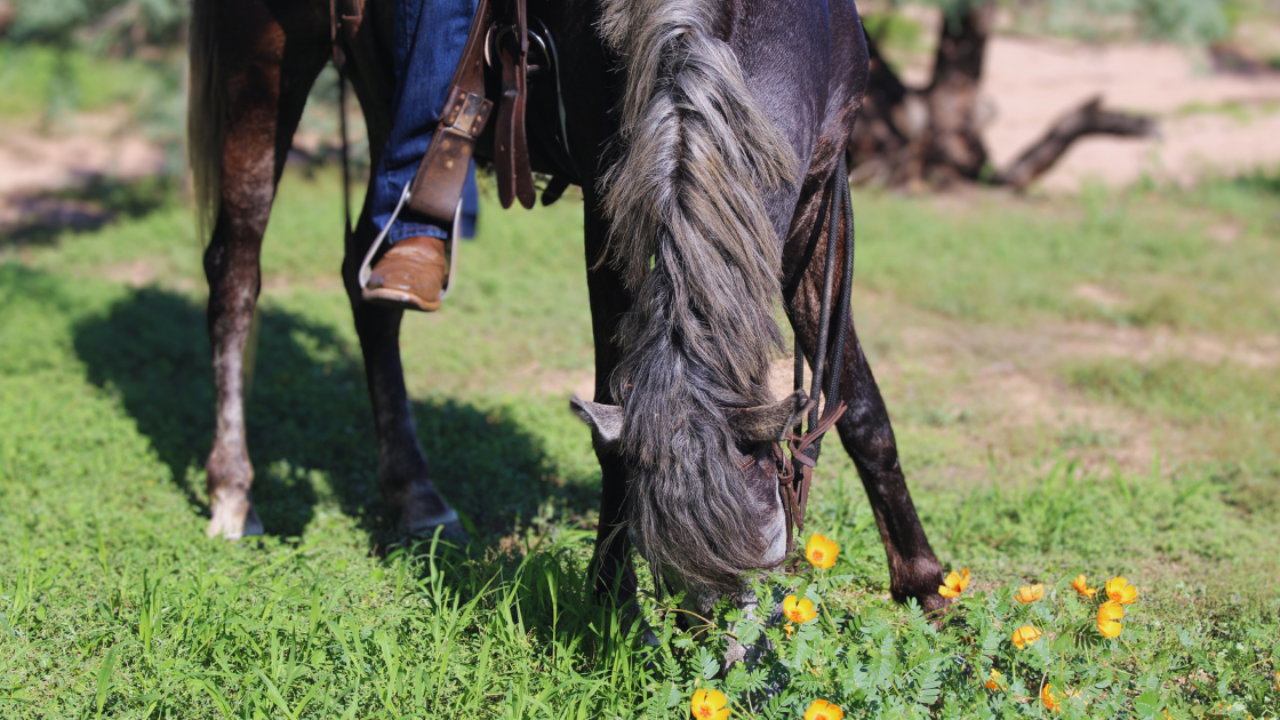
Q: My horse doesn’t like to stand still while hosing him off or giving him a bath? What are your training tips?
A: Horses that don’t want to stand still while being hosed off or given a bath are a common occurrence. First of all, your horse probably doesn’t feel comfortable being hosed off. Maybe he doesn’t like the sound, sight, or feel of the spraying water. If this is the case, teach him to feel comfortable with an approach and retreat method using the water spray nozzle from the hose, or just the hose itself. I like to use a nozzle so I don’t have to make an effort to control the flow of water from the hose while I help my horse get comfortable with the water.
Make sure your horse isn’t tied to anything when you teach desensitizing to water spray. Hold the lead rope in one hand (same hand as the side you are standing on) and have the sprayer going in the other hand (opposite hand as the side you are standing on). Avoid holding the lead rope in a bundle to limit your risk of getting wrapped in the lead rope and drug if your horse really spooks and bolts. As possible, just hold one lead rope in your hand that isn’t folded or wrapped.
Stand an arm’s length away from the shoulder at a 45-degree angle towards the front, ie. half-way between directly in front of him and directly to the side of his shoulder. Then approach touching the horse with the water, and if he begins to get nervous, take it away, very briefly, and then approach again. Little by little, your horse should begin to allow the water spray to get closer and even start to touch him. Continue to approach and touch and retreat briefly when your horse gets nervous. By not tying your horse up, you avoid a setting back accident and can follow him around as you approach and retreat with the water spray. Wherever he goes, try to just stay with him, turning him to stay close enough to the hose when needed.
Usually an approach to the front legs, shoulder and lower neck, then the ribs and back and butt, and finally the hind legs seems like the best sequence of body parts to desensitize with spraying water.
Horses are usually most sensitive around the ears, eyes, and nose/muzzle with water spray, so work on that area last, once your horse is comfortable with being sprayed everywhere else. Only once your horse will stand still and comfortably while you spray all parts of his body would I recommend tying or cross tying in any kind of wash rack. At this point, your horse should stand comfortably and allow you to spray and wash as you’d like.
This process usually can correct a horse’s not standing still while being sprayed or washed within 30 minutes to an hour of working with him. Repeating the process for a few days may be necessary to really solidify the results as well.

